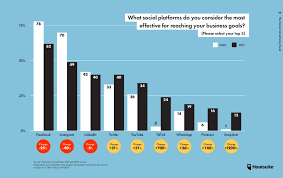[ad_1]
Metrics that Matter: Strategies for Measuring Social Media Return on Investment
In today’s digital era, social media has become an integral part of our personal and professional lives. From Facebook to Instagram, Twitter to LinkedIn, these platforms have an enormous impact on our daily activities. However, as businesses increasingly invest in social media marketing, measuring the return on investment (ROI) becomes crucial to justify these expenditures. In this article, we will explore some metrics that truly matter when it comes to measuring social media ROI.
1. Engagement Rate:
Engagement rate is a key indicator of how well your content resonates with your audience. It measures the level of interaction and participation your social media posts generate. By tracking likes, comments, shares, and clicks, you can understand which content drives the most engagement. A high engagement rate indicates that your content strategy is effective and that your message is resonating with your target audience. Ultimately, increased engagement can lead to more leads, conversions, and sales, thus impacting your overall ROI positively.
2. Conversion Rate:
Measuring conversion rate is essential for understanding how well your social media efforts are directing users to take desired actions, such as signing up for a newsletter, making a purchase, or downloading a whitepaper. Conversion rate measures the percentage of visits to your website or landing page that result in the desired action. By tracking this metric, you can assess the effectiveness of your social media campaigns in driving conversions. A high conversion rate indicates that your social media strategy is not only attracting attention but also compelling users to take action, resulting in a positive ROI.
3. Customer Lifetime Value (CLTV):
While social media metrics like engagement and conversion rate are important, understanding the long-term value of a customer is crucial for measuring ROI accurately. Customer Lifetime Value (CLTV) calculates the net profit a customer generates over their entire lifetime as your customer. By monitoring this metric, you can identify the value of customers acquired through social media platforms, allowing you to make informed decisions about investment allocation. Moreover, CLTV enables you to focus on retaining existing customers, building loyalty, and fostering repeat business.

4. Social Media Reach:
Social media reach refers to the number of unique users or followers who have viewed your content. Tracking this metric is vital to assess the overall exposure and visibility your brand receives on social platforms. A high reach indicates that your content is being seen by a large number of users, expanding your potential audience and brand recognition. By evaluating the reach of your social media campaigns, you can determine if your content strategy resonates with your target audience and whether your reach justifies your investment.
5. Cost Per Acquisition (CPA):
Cost Per Acquisition (CPA) measures the average cost incurred in acquiring a customer through social media channels. It includes all costs associated with social media advertising, content creation, management, and monitoring. By calculating CPA, you can understand the efficiency and profitability of your social media efforts in terms of customer acquisition. A lower CPA indicates that you are effectively utilizing your resources to acquire customers, thus improving your ROI.
Maximize Efficiency: How Outsourcing Social Media Can Free Up Your Team’s Time
In conclusion, metrics play a vital role in measuring social media ROI. By tracking engagement rate, conversion rate, customer lifetime value, social media reach, and cost per acquisition, businesses can gain valuable insights into the effectiveness and impact of their social media strategies. These metrics help marketers identify which strategies are working, optimize campaigns, allocate resources effectively, and ultimately drive a positive return on investment. Consequently, understanding and acting upon these metrics that truly matter will enable businesses to harness the full potential of social media and ensure their marketing efforts are fruitful.
[ad_2]




